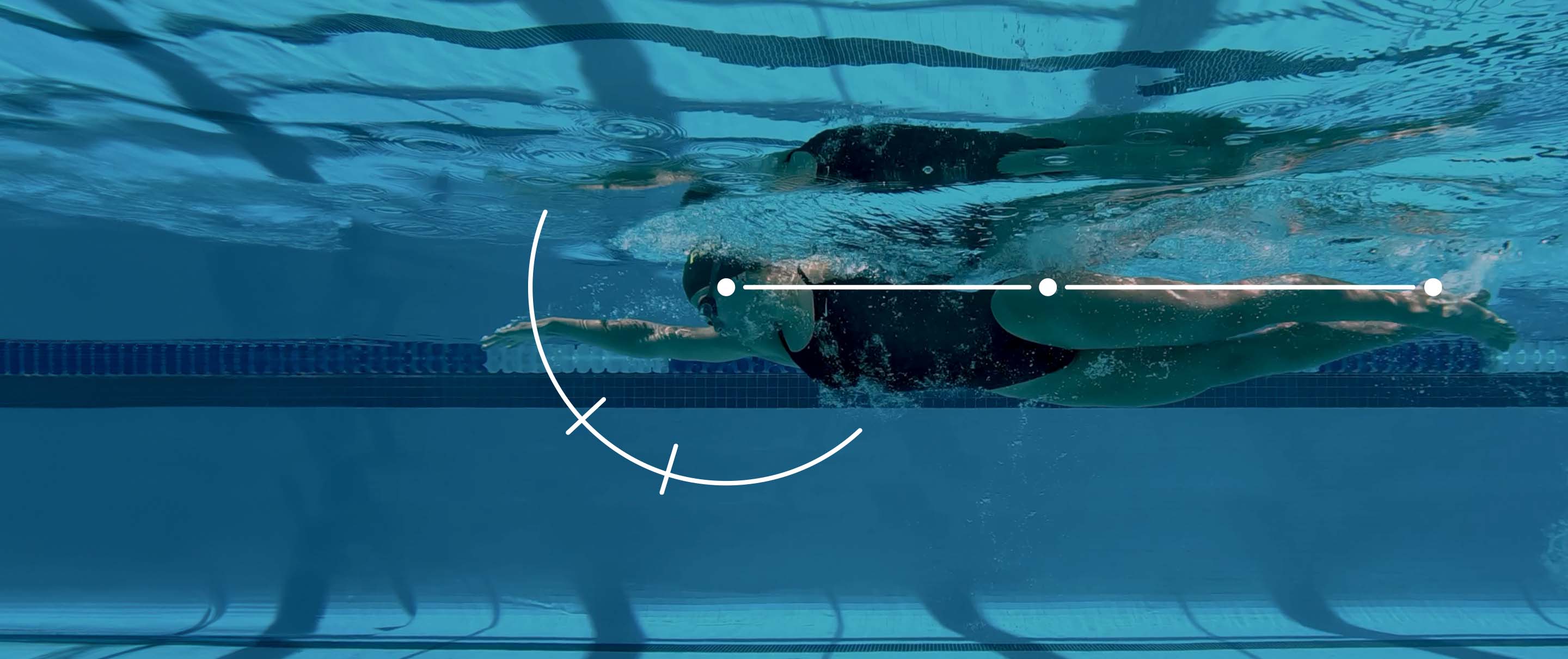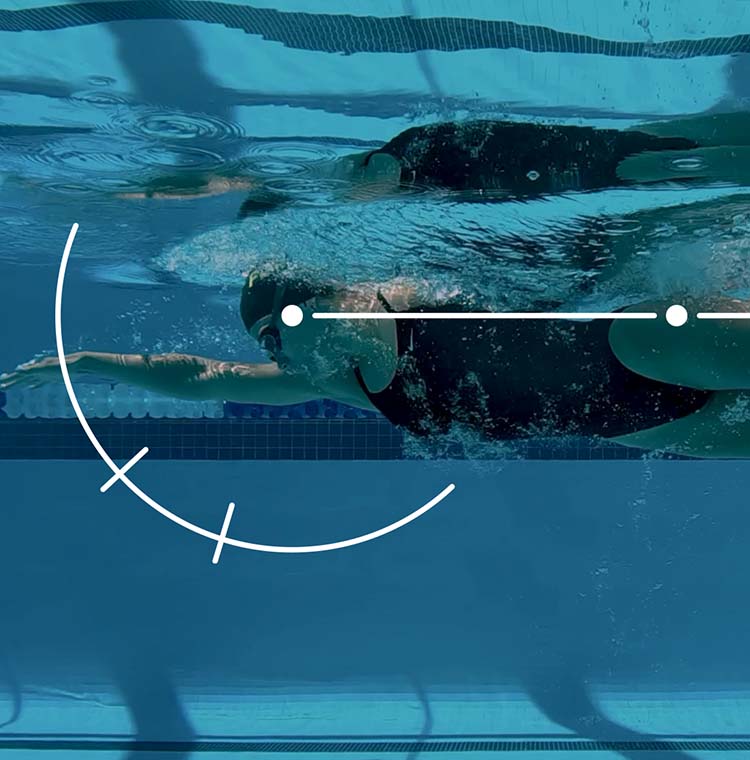How to Swim Freestyle: Pro Tips from 3-Time Olympian Brian Johns
For triathletes, your swim sets the tone for the rest of your race. You want to strike a balance between speed and efficiency, getting out of the water in your target time while still saving enough energy for the bike ride and run. That’s why learning how to swim freestyle is a vital skill.
This article explains the fundamentals of how to swim freestyle and explores some advanced techniques you can use to take your freestyle swim stroke to the next level. Check out these freestyle swimming tips:
How Can You Improve Your Freestyle Swimming Technique?
When you’re thinking about how to improve your freestyle swim stroke, it all comes down to one of two things:
- Decreasing drag or
- Increasing propulsion
But when trying to improve their freestyle swimming technique, most people focus on changing what their hands or arms are doing in hopes of increasing the power they create—and, in turn, their speed in the water.
While this is effective, working on techniques to decrease drag is an under-utilized but often better option.
Think of it this way: giving a boat a bigger engine might increase its power, but it won’t do anything for the boat’s speed if you steer it wildly from left to right.
Essentials and Advanced Techniques: 4 Areas of Focus to Master Your Freestyle Swimming Technique
Since improving your freestyle swimming technique ultimately comes down to reducing drag and boosting propulsion, it’s vital to master what your head, body, legs, and arms are doing while you’re in the water.
1. Head
The Fundamentals
The first thing to focus on when it comes to your freestyle swimming technique is maintaining a neutral head position.
When your head is in the right position, you’ll be looking at the bottom of the pool or, at most, between one and two meters ahead. The water should feel like it’s hitting the top of your head.
However, if you’re looking forward at the wall or back at your feet, that’s a telltale sign that your head is out of position. That’s because, if your head is too far up in the water, your hips and heels will naturally sit lower in the water, in turn creating additional drag and resistance.
It’s also essential to minimize side-to-side head movement, and this can be practiced by swimming with a snorkel or practicing strategic breathing patterns.
Advanced Techniques
An unavoidable aspect of freestyle swimming is coordinating your swimming with your breath—but this is easier said than done and can seriously impact your performance.
That’s because breathing during your stroke increases your drag compared to when your head is in the water. In order to minimize this unavoidable drag, it’s essential to practice proper breathing techniques.
In order to avoid additional drag, you’ll want to time your breath with your entry—starting your breath to the left when your right hand enters the water.
The best way to do this is by rolling your shoulders to breathe rather than turning your head—think of it like rolling a skewer.


And, rather than lifting your whole face above the water, your goal should be to breathe with one goggle submerged below the surface and one above the water.
Then, your head should lead your hand back into the water—not the other way around.
If you’d like to explore this topic in more depth, read our article that explores how to improve your swimming breathing technique .
2. Body
When you’re swimming freestyle, your goal should be to maintain a natural posture.
What exactly does this mean?
Imagine you’re standing on the ground with a proud posture. When you’re in this position on land, your body is at its most stable and strong.
So, you should strive to replicate this position when you’re in the water as that strength and stability will translate into your swimming.
The Fundamentals
Your center of gravity is your belly button, but your center of buoyancy is your sternum.
This means that, when you’re lying on the water, you need to counteract the greater mass of your lower body in the water with a more optimal position with your upper body.
This can sometimes feel like you have to press your chest down on the water in order to bring your hips to the surface.
But often, it’s better to think about how your body is aligned in the water than to try to do something specific with your body in order to bring your hips up.
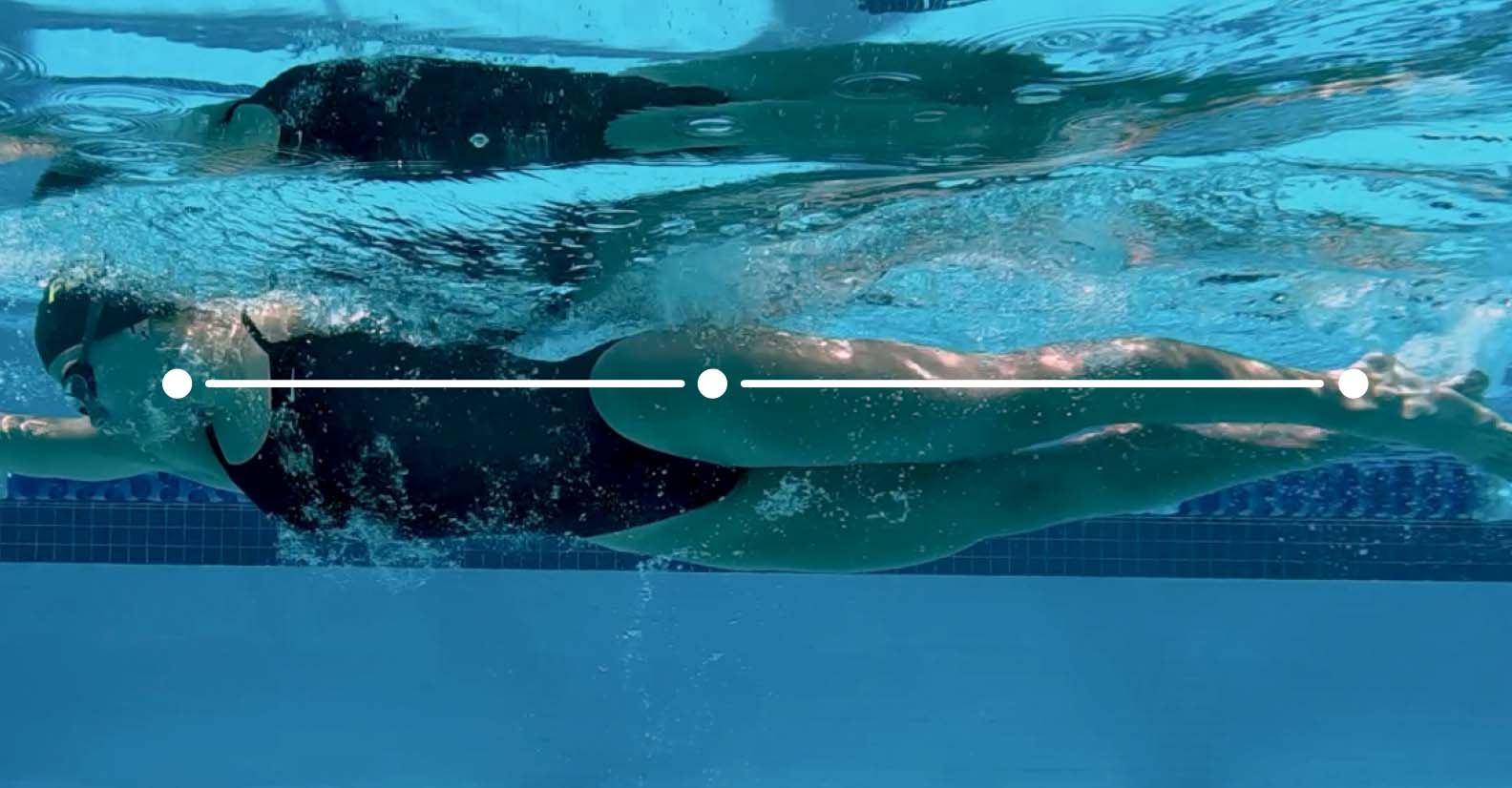
When you’re learning how to swim freestyle, your goal should be to feel like you’re swimming “downhill” through the water while still striving to keep your back dry.
Advanced Techniques
While it’s important to maintain a neutral head position and focus on “swimming downhill,” it’s also essential to ensure that your heels are in line. While some swimmers are able float their legs to the surface, most will need some form of kick in order to keep their body in line, and these kicking techniques require their own dedicated attention.
3. Legs
While you might think the majority of your propulsion should come from your legs, this isn’t actually the case.
In fact, your legs only drive between 10% and 15% of your propulsion. The rest comes from your arms (more to come on this).
This is an especially important concept for triathletes to grasp.
Why?
Because you’ll need to save the majority of your strength for your bike ride and run. If you’re trying to draw all of your propulsion from your legs, you’ll waste energy unnecessarily and risk burning out muscles that are essential to getting you through the rest of your race.
So, rather than thinking about using your legs to drive propulsion, it’s much more important to use your kick to bring your legs to the surface and minimize drag.
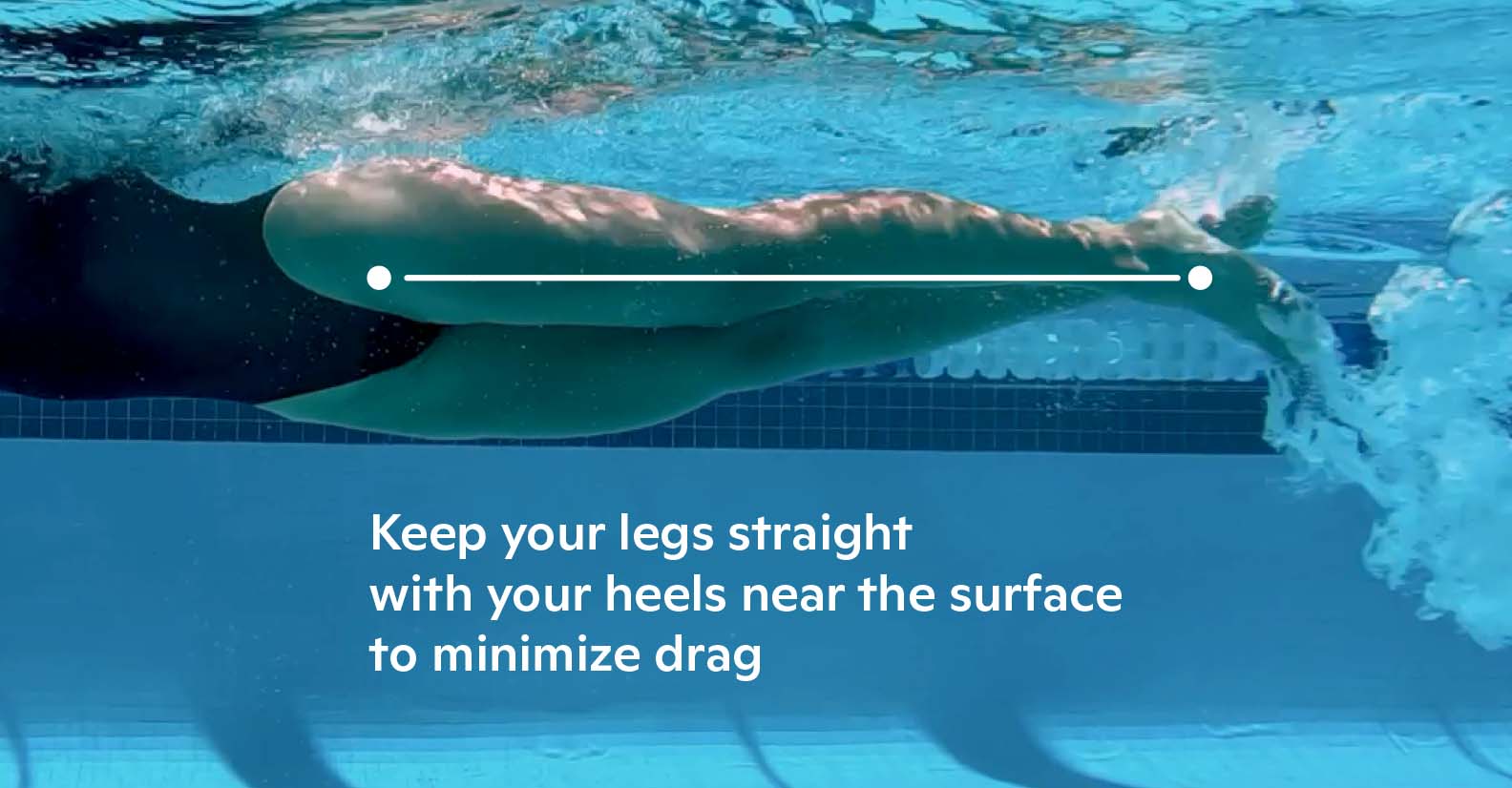
The Fundamentals
When you’re learning how to swim freestyle, it’s important to keep your legs straight and in a narrow position with your heels near the surface to minimize drag.
Your goal should be to kick from the hips—imagine that you’re boiling the water with your heels.
Most swimmers need to use a six-beat kick in order to achieve this—kicking your feet six times for each stroke with your arms. This will help keep your legs at the surface of the water but will also come at a higher energy cost than the alternative two-beat kick.
Some swimmers will be able to do a two-beat kick to minimize energy expenditures and ensure their feet remain afloat. However, it’s challenging to learn a two-beat kick on its own, and most swimmers typically need to learn a six-beat kick in order to modify their technique for two kicks.
Advanced Techniques
Once you’ve mastered the fundamentals of your freestyle swimming technique with a six-beat kick, you can begin to work on swimming with a two-beat kick.
This kick is much more economical than a six-beat kick and will eventually feel easier to maintain, but learning how to swim freestyle with a two-beat kick while still maintaining coordination with your stroke will take a lot of hard work and focus.
If you want to start working on your two-beat kick, we recommend incorporating some equipment and swimming drills into your swim training.
Swimming with Pull Buoys
Try swimming with a pull buoy but kicking during your stroke. This will help you stay afloat while experimenting with what to do with your legs.
You can also try a two-beat kick with your pull buoy. With this drill, try timing a kick on the entry of each stroke. This is a good start for helping you understand the timing of a two-beat kick.
Swimming with Fins
When you’re swimming with fins, try to use fewer kicks. This will force you to make your kicks harder which will allow you to better keep your legs afloat.
This will also engrain in you the extra emphasis you need to do a two-beat kick versus a six-beat kick.
Want to learn more? Read through our resource about swimming with fins to help you get faster and stronger.
4. Arms
While it may seem surprising to some swimmers, your arms create the vast majority of your propulsion when you’re swimming freestyle—and that’s great news for triathletes.
But with that being said, your arm technique still needs to be balanced.
It’s important to ensure that the propulsion created by your arm movement is greater than the amount of drag your arm creates.
If not, all of the effort and energy you put into your freestyle swimming stroke will not equal the equivalent power output.
The Fundamentals
To grasp an overall picture of great freestyle technique, imagine this scenario.
You’re climbing up a ladder. You place your hand on a rung and then your body moves upward.
Think about that movement.
Did your hand pull the ladder down? Or did you pull your body up past your hand?
The ladder never moved. So, it stands to reason that you must’ve pulled your body upward past your hand.
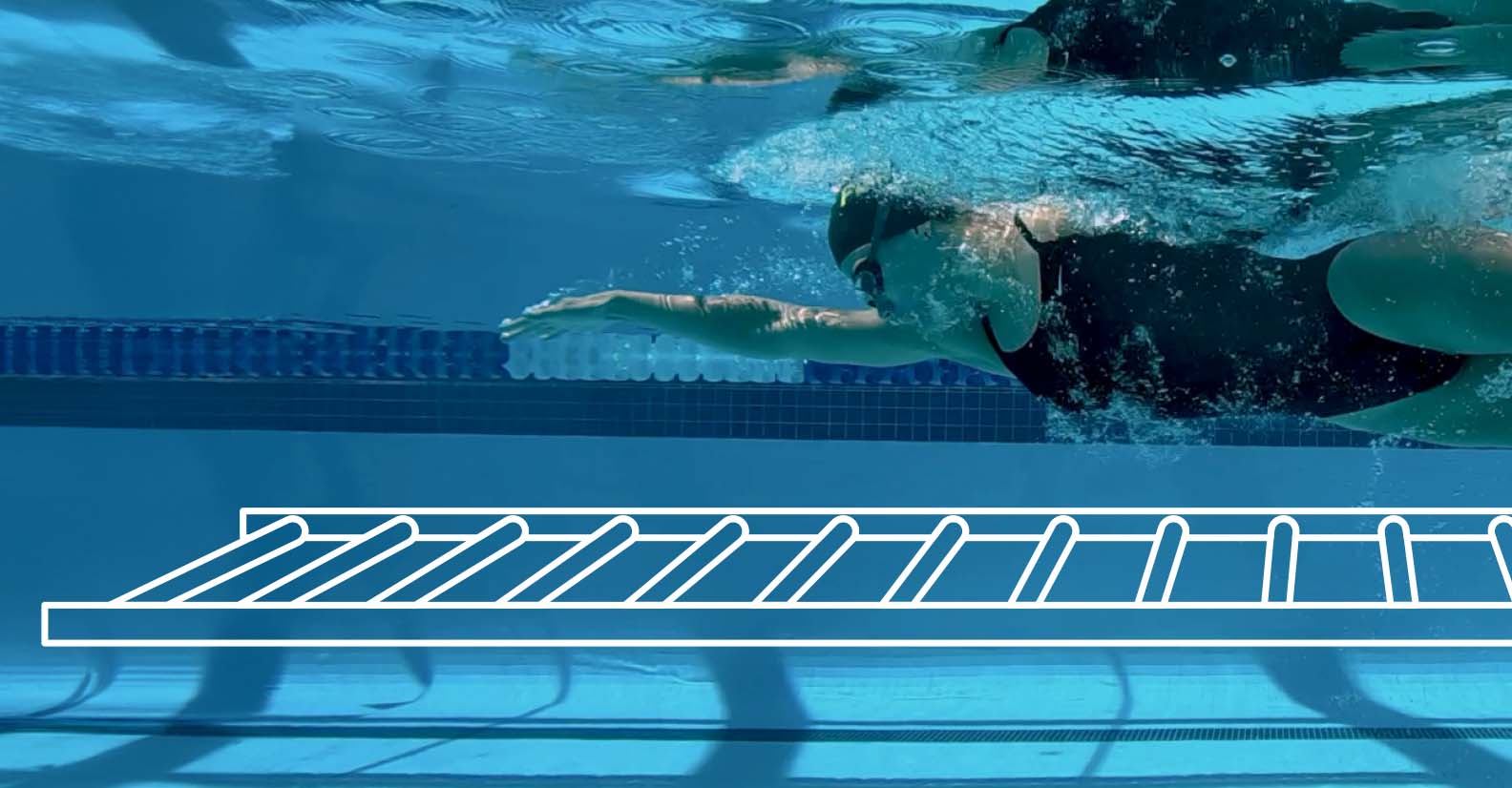
This is an important picture to keep in mind when you’re thinking about swimming technique in general, but it’s especially important when it comes to your freestyle swim stroke.
Good freestyle swimming technique is often described as “catching” water and “pulling” the water past your body.
Instead, try to think of it as “anchoring” your hand in place—like grabbing the rung on that ladder— and pulling your body past your hand.
You’ll be surprised how much this mental shift impacts freestyle swimming technique.
With that all said, there are three main fundamental phases of your freestyle swim stroke.
1. Anchor
Think of anchoring as the portion of your stroke where you grab the rung on that proverbial ladder.
The first step is a stealth entry. You need to keep your fingertips forward, in front of your shoulders, rather than crossing your body.
Next, you need to “catch” the water, anchoring your forearm in place at the surface of the water.
Finally, as you begin to pull your body through the water, you’ll want to keep your armpit open with your elbows pointed out and your shoulder, elbow, and hand in line in the middle, creating a straight “paddle.”
2. Finish
The second phase of your arm technique is the finish.
Once you pass the midpoint of your stroke, accelerate through the finish. Your hands should go past your hips with your fingers pointed down.
Aim for a sweeping motion through the water rather than pressing and lifting.
3. Recovery
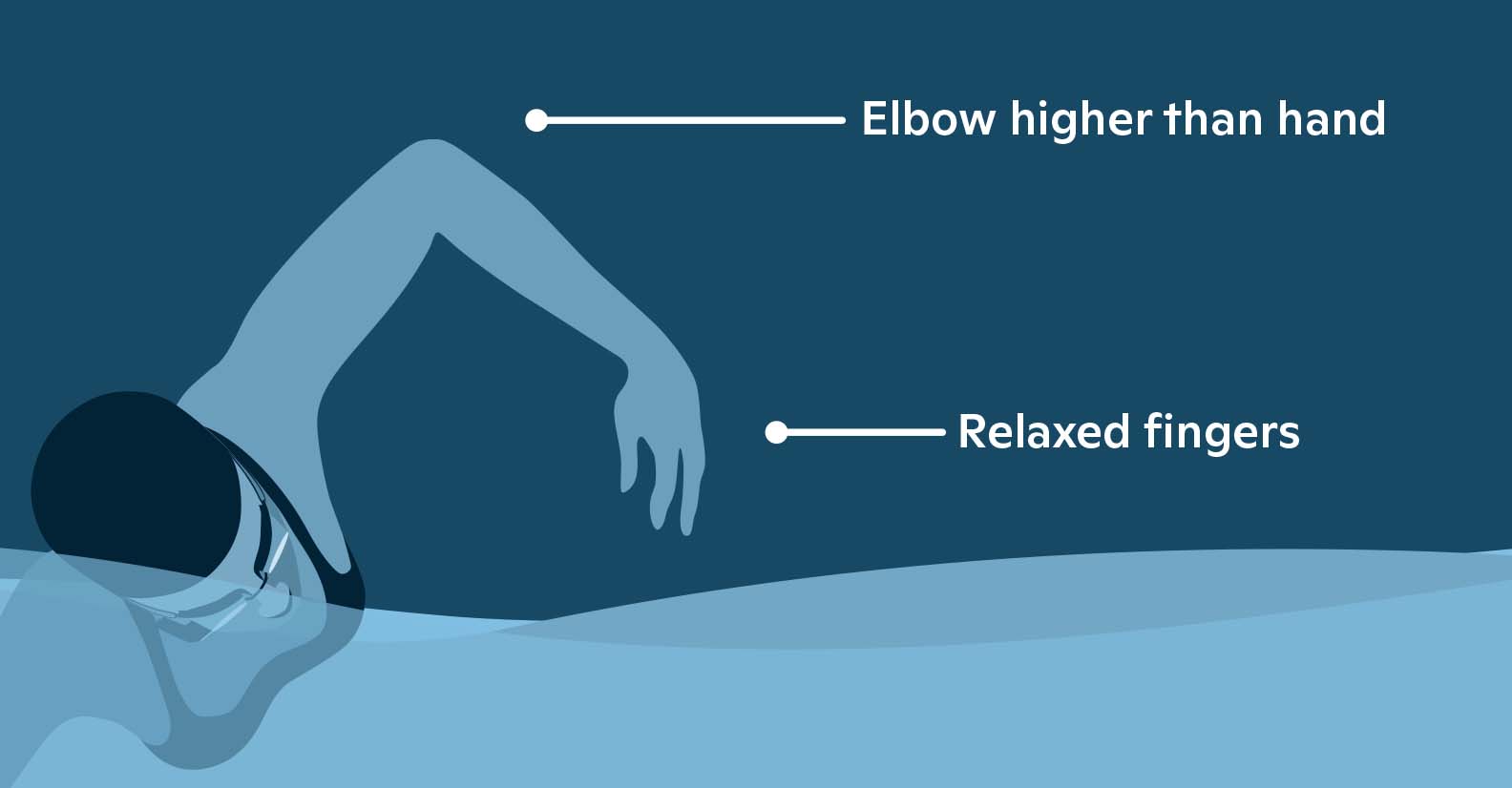

The third phase of your arm technique is your recovery, and it’s essential for keeping your stroke relaxed and coordinated. Yet this is an often under-discussed aspect of your stroke.
This involves keeping your elbow high and your fingertips relaxed while drawing a half-circle with your hand rather than a line.
You’ll want to ensure your hand, elbow, and shoulder are all in line at the middle of your stroke.
Advanced Techniques
In this article, we’ve talked a lot about the challenges of coordination. Getting this right can often be complicated given the different freestyle swimming styles, including catch-up, almost catch-up, sprinting, and beyond.
But regardless of what style you’re swimming in, the common thread is the need to Roll & Reach.
What does this mean?
It means that when one arm finishes the stroke, you should be rolling to the other side and reaching forward with the opposite arm
This ensures that, during the finishing phase of the stroke when you’re creating the most propulsion on one side, you’ll be minimizing drag with the other arm maximizing your speed.
You can build different stroke timing from this foundation, but the connection between the finish of one side and Rolling & Reaching on the opposite stays true.
As a triathlete, learning how to swim freestyle is a foundational skill. When done properly, it allows you to move quickly and efficiently through the water while still retaining enough energy to conquer the bike and run legs.
Whether you’re a first-timer or a seasoned racer, mastering your freestyle swimming technique is a matter of perfecting the basics and then building more advanced techniques.
Get Prepared for Your Next Triathlon with FORM
If you want to learn how to swim freestyle or to dial in your freestyle swimming technique, add FORM goggles to your gear bag. With FORM, you can see real-time data and drills directly in front of your eyes while you swim. Identify when your technique is dropping off and adjust your form using pace, stroke rate, and distance per stroke data while you swim. Your FORM goggles come with a 2-month trial of Premium Features including 1,500+ guided workouts as well as triathlon-specific training plans.
